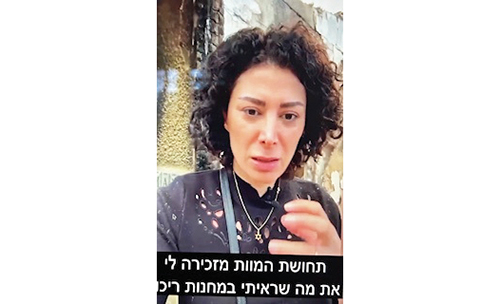While every family’s meals are unique, the key ingredient to a successful meal (aside from delicious food) is to have all participants feel included and involved, in a warm, relaxed and enjoyable environment. Interactions around the table can include discussion, telling jokes and riddles, singing zemirot, sharing divrei Torah, discussing events from the week or playing games. Some families partake in all the above and many relish other collective activities. While some families easily engage in natural conversation, others struggle to get conversations started or maintain them. This article will focus on engaging children during Shabbat meals through a variety of conversation starters and a recommendation of a fun table game.
One of the goals of family Shabbat meals is to teach children how to carry on a courteous conversation. Basic skills such as listening, waiting your turn to speak, learning how to get into a discussion and not interrupting others are all skills that are learned and practiced around the table. During the week, because of the overly scheduled lives of both parents and children, conversations are often kept to a minimum; however, on Shabbat we have more time to sit and schmooze. Shabbat meals should ideally be relaxed and free from pressure, allowing plenty of time for rich discussion and practicing conversation skills.
One way to get a conversation started at the table is to offer a prompt or ask a question that requires a genuine response by all participants. We want to move away from vague questions, such as “How was school today?” which typically yield single-word responses and don’t lead to substantive conversation. Young children can be told to “Tell us something that you like about yourself.” For older children it can be “a time you felt good this week” or “a time you did something nice for someone else.” The goal is to get everyone to share something about themselves and to listen to each other. There are no right or wrong responses, and this is not the time to correct or rebuke anyone. Adults should also contribute, and leading with an adult helps model the type of responses we are seeking. It also gives others some time to formulate their own responses. Reserved participants can be quietly told in advance (perhaps before the meal) the question to be raised, so they have more time to think of their answer.
After a participant shares their response others can ask follow-up questions, offer encouragement or share their own funny story relevant to what was said. The fact that you are interacting in a positive fashion is more important than the specific content being discussed. An added bonus is that you might be surprised by some of the responses given and learn something about your child. A more challenging version of this “sharing activity” can be to “say something nice about the person sitting next to you.” This encourages family members and participants to be complimentary and kind to each other.
An additional suggestion for families that have difficulty having inclusive conversations is to engage in a game or activity to loosen the mood and get people talking. Even if someone generally prefers to be silent, they’ll likely see everyone else having fun and decide to join in too. There are many different types of table games, each of which serves a different purpose. For example, ice-breaker games are best used when your intention is for new people to meet each other. Activities in which participants share something about themselves provide an opportunity to learn about one another, even among immediate family members. Other games have participants interact while thinking collaboratively to solve a challenge. There are many such thinking games, and “Guess the Mitzvah” is an easy-to-play game that works well for children and adults, aged 6 and above. There are many different levels on which this game can be played, and the age and knowledge of the participants will determine the level at which it is played. For families with very young children, or participants with limited knowledge of mitzvot, alternatives could include guess the animal, food or great Jewish person, or whatever category best fits your audience.
The basic idea of “Guess the Mitzvah” is that one person thinks of a mitzvah and people around the table take turns asking yes/no questions, in the style of the classic game Twenty Questions, until someone correctly guesses the Mitzvah. The person leading the meal can be the first one to think of a mitzvah, as this should minimize any arguing over who gets to go first. Participants take turns asking a question, to which the person who selected the mitzvah responds with yes or no, as appropriate. The goal is to narrow down the mitzvah, until someone uses their turn to guess “Is the mitzvah…?” This game keeps everyone engaged and listening to each other’s questions because the answer to each question gives clues for all participants. This makes “Guess the Mitzvah” an ideal game of listening, thinking and speaking.
Some good starting questions are: Is it a mitzvat aseh (a mitzvah to do something, as opposed to a mitzvah to not do something)? Does this mitzvah require an object to do? Is it connected to a Jewish holiday? Is it in the Torah? Is it a time-bound mitzvah? Have I ever performed this mitzvah? Does it involve speech? etc. The person who correctly guesses the mitzvah becomes the next one to think of the mitzvah as the game continues. Younger children can whisper their mitzvah to a parent or older sibling, who can help them respond to questions which they might not be able to answer on their own. Very young children can also be involved by having another participant provide them with questions to ask.
These activities will hopefully lead to expanded conversations in which participants share stories, recall family experiences and tell jokes, and they may even lead to an interesting Torah thought or a connection to current events. For families who are not used to relating in this manner, these structured interactions and games might be uncomfortable at first, but if you keep at it, the conversations will become more natural and enjoyable. Remember—the goal is to facilitate a positive, healthy, inclusive Shabbat experience. Feelings of warmth and belonging make the Shabbat meals more enjoyable and help bring families closer.
Chaim Nissel is Yeshiva University’s dean of students and a clinical psychologist residing in New Hempstead, New York. He can be reached at [email protected].













